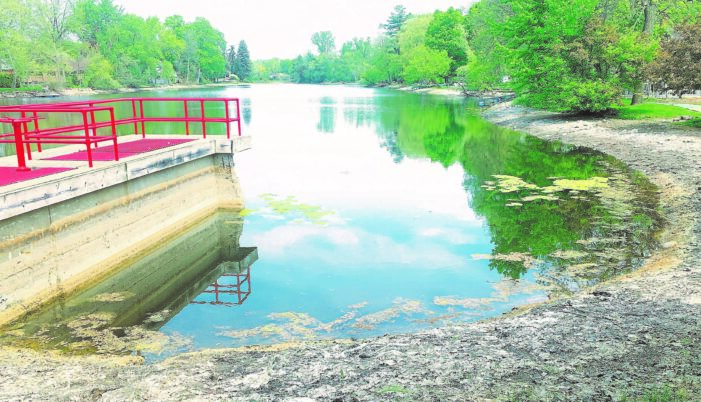By Matt Mackinder
Clarkston News Editor
Last week, Clarkston City Manager Jonathan Smith sent out a communication to city residents and business associates announcing that the city received official notice from the State of Michigan that their application for a grant in their Dam Risk Reduction Grant Program (DRRGP) for the Mill Pond Dam had been approved.
“This is outstanding news and we are so thankful,” Smith wrote. “As you will recall, we applied to the DRRGP last fall for funds to conduct a Mill Pond Lake Level Study and to design new lake level controls, with a total estimated cost of $106,000. For the required 10 percent down payment ($10,600), the Mill Pond Lake Improvement Board will fund $5,000 and the City of the Village of Clarkston will fund $5,600. Upon completion of the design phase, a second application will be made to the DRRGP to help cover the construction costs of the new lake level controls and deactivation costs of the existing controls.
“While we will make every attempt to proceed expeditiously on this project, please be aware that there will be many steps involved to reach the final goal of a new control mechanism managed by the Oakland County Water Resource Commission. The entire process could take three years or more, but today’s notice is a significant first step.”
Clarkston Mayor Eric Haven also chimed in on the news.
“We are also working on a log format to document adjustments to the valve in the dam currently so people can understand everyone’s attempt to mediate the changing levels of the mill pond,” Haven said. “Stay tuned for more information about this.”
Haven also said he heard from a concerned resident on the Mill Pond relative to the near-term need to optimize the pond level for beauty and recreational use this summer.
“I know everyone sees the (1-3 year?) time gap between a final solution and right now, especially since the pond level is down at this point and summer is close at hand for recreational use of the pond and beauty of our waterfronts,” said Haven. “So you know, I am working with Jim Markwalder (North Main pond resident) to create an public log of any adjustments made to the valve. Jim is going to complement this journal (log) with a device to record actual readings of the pond level, which should in the interim, give us correlation between adjustments and actual levels in the lower (south) pond, understanding there will be a day or two delay between the two variables. But these items in tandem should help us be more scientific about what is actually going on and take away some of the miss trust. I will tell you, Mr. Ed Adler and Mr. Bob Roth, dam owners, have been very cooperative and want to have a credible trust relationship with pond residents. I have been very pleased with their openness and desire to help.”
Haven added that the Clinton River Watershed flow into the ponds is “the variable out of anyone’s control.”
“Bob Roth told me yesterday he looks at the flow at Bluegrass and says the flow is very low, if any, right now,” said Haven. “We all understand if there is no flow, the pond will remain low. Please use the Bluegrass inlet as your indicator, also, of what’s actually going on with filling the pond. I know people have said historically the pond level has not varied this much. This is somewhat of a mystery to everyone and might be related to things going on upstream, beaver, dams, a/or lack of rainfall. I don’t know how to measure flow into the upper Mill Pond other than periodic observation.
“Bob has a documented backlog of adjustments to the valve which he will report and will become part of our record moving forward. We all want to see this situation corrected as soon as possible.
Emily Duthinh from Blue Heron Land Conservancy offered information as potential reason water flowing into the Mill Pond from upstream Clinton River tributaries is different than longtime residents remember.
“Some of the fluctuation may be caused by the Encore development upstream at Dixie and I-75,” said Duthinh. “As forest land is paved over and changed into turf grass, rain water runs off instead of infiltrating and recharging the ground water. This makes streams susceptible to flash flooding when it rains. During dry spells, there is less groundwater to supply the base flow to streams and they tend to dry up.”
PHOTO: The Mill Pond as it looked the afternoon of May 19. Photo: Matt Mackinder

